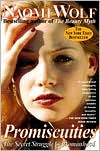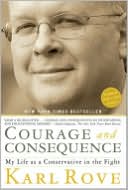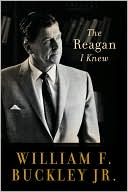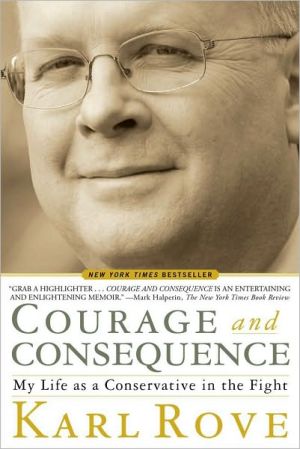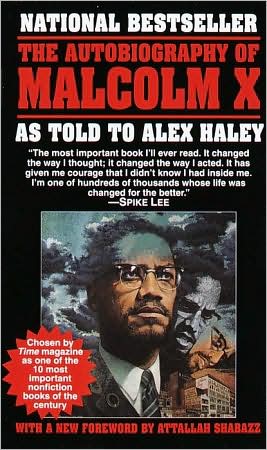Promiscuities: The Secret Struggle for Womanhood
In this provocative and highly personal book, bestselling author Naomi Wolf explores a subject that has long been taboo in our society: women's sexual coming-of-age. Promiscuities brazenly exposes the truths behind the conflicting messages directed at young women during and after the sexual revolution. Drawing on surprising examples from the ancient and recent past, along with vivid recollections of her own youth, Wolf shows how our "liberated" culture still fears and distorts female passion....
Search in google:
"It's time for heterosexual women to come out of the closet and reclaim their sexuality. There are no good girls, we are all bad girls in the best sense of the word." -- Naomi Wolf As she yanked the shroud off the shoddy construction of beauty standards in The Beauty Myth, Naomi Wolf reveals the history and transmutation of our many notions of female sexuality. In this landmark work, Wolf examines the formative powers of pop culture, mythology, and scientific research as she argues not only for the liberation of female sexuality but for a deeper understanding of the nature of female desires. The sexuality of young girls seems to belong to everyone but themselves. Their bodies are strewn throughout our cities selling jeans along the sides of buses and languishing on billboards high above our streets. The male sexual coming-of-age has been told often, but aside from these images of erotica, there is no such bildungsroman for young, developing girls to identify with. Wolf alerts readers to the scripted but undirected "struggle" undertaken by girls as they develop into womanhood, and how these early experiences affect women's sense of self-worth as adults. Along with her own sexual experiences, Wolf's argument is bolstered by the stories of a group of adolescent girls as they become aware of their sexuality in a culture with a tendency to subvert female passion. Wolf succeeds in encouraging female passion out of the closet and invites women to take back their sexuality in a celebration of womanhood. Publishers Weekly In this first-person account of growing up female in post-sexual revolution America"not a polemic but a set of confessions, a subjective exploration"Wolf (Fire with Fire) examines the "shadow slut" who trails "girls" in a culture that demands they be sexual even as it dismisses and devalues female desire. The result is an at times awkward mlange of memoir, reportage and academic anthropology. Contrary to our enduring Victorian myth of sexually rapacious men and passive women, Wolf argues, womenwith their capacity for multiple orgasmsare the more carnal sex. However, the sexual experiences recounted here offer few glimmers of pleasure. Still, there are nuggets, as when a young woman relating a lesbian experience discovers, "God, this is sort of like kissing a boyexcept that she knows how to kiss!" While Wolf is at her best when evoking the anything-goes ethic of her hippie upbringing in 1970s San Francisco, her account grows oddly skittish as she gets older. Whether describing the fumbling process of losing her virginity or her desire to wear a "technically white dress" on her wedding day, Wolf tends to cut away too quickly to sociological boilerplate, as though she doesn't trust her own story to speak for itself. Still, it's hard to quarrel with Wolf's basic contention: that girls need more accurate information about their own bodies and better rites of passage than wrestling matches in the backseats of cars. (June)
From Chapter 3 of Promiscuities by Naomi Wolf\ \ As we prepared for adolescence, our marching orders were contradictory, for some of the rules of the game we inherited came to us intact from the days of the dinner dance and had not been abandoned with the sexual revolution. Passivity was one rule. Girls that boys liked were not supposed to ask for a dance. You were not supposed to kiss first. And while you were waiting for a boy to put his arm around you, you were not supposed to move more than a fraction of an inch. If you precipitated contact in any way, you would be going "too far."\ \ Those confounding rules were hard for active, curious girls to put into practice. The culturally imposed process of "whiting out" our child's erotic consciousness--what Mary McCarthy has called "drawing a blank"--this intentional not knowing that girls are asked to yield to at moments of sexual experience, involved us, necessarily, in the task of becoming mysterious to ourselves. We began to notice that songs about "becoming a woman" centered on the woman's vagueness and lack of reality. In these songs, men were sexually infatuated with women they did not know, women who had no outlines and no characteristics. One song--"Knock Three Times"--told the story of the sexual obsession of a man with his anonymous downstairs neighbor: "I can feel your body swayin' one floor below me, you don't even know me, I love you." The same scene was played out in the Temptations song "Just My Imagination": "But in reality she doesn't even know me!" "She takes just like a woman. She makes love just like a woman. And she\ aches just like a woman. But she breaks just like a littlegirl," crooned Bob Dylan. What did that mean? What was happening to her each of those times? How would we recognize it? "I love you," a truck driver yelled out one day at a red light as my mother held my hand on Haight Street, and she smiled in spite of herself. Love you? He doesn't know you! I thought indignantly.\ \ \ We would speculate with one another in maddening conversations as we played in Dodie's basement. Our Mystery Date board game began to supplant our Barbies. What did it mean to "make love just like a woman"? How could we know? Clearly, it would not be enough just to grow up. There was something else involved. How would we learn? What if we didn't manage to "make love just like a woman"? What god-awful thing would we then be?\ \ \ "Lay, lady, lay, lay across my big brass bed, ..." Dylan sang too. "Stay with your man awhile, until the break of day, let me see you make him smile. His clothes are dirty but his hands are clean ..." Was a woman different from a lady? Better? Worse? Did it depend on the situation? What was she doing to him to make him smile? How could we learn that? Was there no deal in which he would make her smile? Why not? Sex, we understood by eleven, did not work symmetrically. "Her clothes are dirty but her hands are clean"--we already knew we would never hear that kind of line in a seduction song.\ \ \ The woman's sexiness, when it wasn't a mystery, was often a thing or a single attribute: "She wore ... an itsy-bitsy teenie weenie yellow polka-dot bikini" ... "Every kind of girl there was, long ones, tall ones, short ones, brown ones ... Spill the wine. Dig that girl." The message was that we had to be wanted in order to be allowed to want. We had to be mostly out of focus, except for a bikini or a hair color, to be sexy. It was not just a biological mystery that was enfolding us; it was cultural.\ \ \ Carol Gilligan and Lyn Mikel Brown, in their classic Meeting at the Crossroads, eloquently described the way in which girls go from being distinct personalities at ten to amorphous, uncertain creatures at thirteen. An analogous process, I am convinced, takes place in relation to girls' loss of the "voice" of their own desire. The culture that surrounds girls signals to them that they must, sexually, forget themselves. They must become passive in relation to the energy of desire, or detached from owning it, even in the face of its increasingly active pressure.\ \ \ This situation--the mystification that intervenes between girlhood and womanhood--reminds me of a scene in Lewis Carroll's Through the Looking Glass. Alice finds herself wandering in a beautiful, dark forest. She is joined by a young deer, which accompanies her in perfect amiability. The two share the journey with a sense of deep familiarity. But when they emerge from the wood, the fawn recognizes its companion for what she is: "I'm a Fawn ... And, dear me! You're a human child!" The creature bounds away in alarm, leaving young Alice alone.\ \ \ Something like this happens to us at the threshold of adolescence. "What are you?" the girl asks of her own desire--once her companion, now wary of the light. And: "What am I?"\ \ \ The girl must now pass into the unforgiving glare of social reality in which human and beast--consciousness and appetite--confront each other in a state of estrangement before the relearning begins. The girl's consciousness and the animal aspect of her nature must assume names that insist they are separate beings ("And, dear me! you're a human child!")--rather than names that allow them to remain parts of each other. The girl, denatured, becomes a mystery to herself.\ \
AcknowledgmentsIntroduction: First Person Sexual1The Time and the Place: 1968-197132The Facts of Life143Activity into Passivity: Blanking Out234Free Flight to House Arrest: Slowing Down295Nakedness: Pride and Shame356Girlfriends507Sluts578First Base: Hierarchy839Second Base: Love and Control8710Crash Course: Their Bodies9711Third Base: Identity10412Fourth Base: How to Make a Woman11613Skipped Homework: Our Bodies13914More Skipped Homework: Our Pleasure15715Babies16216Cheap or Precious?17217Adults19218A Virus20119An Hypocrisy20820The Technically White Dress22121The Time and the Place: 1996225Notes235Bibliography263Index273
\ From the Publisher"At last, a new generation of women writers is addressing the powerful issues of female sexuality. I gulped this wonderful book down in one sitting, like a novel. Brava Naomi Wolf for your courage, your intelligence, your lucid prose." - Erica Jong\ "Refreshing ... highly evocative ... Wolf does two important things very well: reminding readers her own age what it felt like to be a teenage girl, and providing a crash course on the wildly varying cultural meanings attached to female sexuality throughout history." - The Ottawa Citizen\ "Naomi Wolf [is] the best writer about women and sexuality that we have." - Toronto Sun\ "Fascinating ... Wolf celebrates the ancient concept, heavily suppressed in the 20th century, that women are the more carnal sex." - Vancouver Courier\ \ \ \ \ \ Publishers Weekly - Publisher's Weekly\ In this first-person account of growing up female in post-sexual revolution America"not a polemic but a set of confessions, a subjective exploration"Wolf (Fire with Fire) examines the "shadow slut" who trails "girls" in a culture that demands they be sexual even as it dismisses and devalues female desire. The result is an at times awkward mlange of memoir, reportage and academic anthropology. Contrary to our enduring Victorian myth of sexually rapacious men and passive women, Wolf argues, womenwith their capacity for multiple orgasmsare the more carnal sex. However, the sexual experiences recounted here offer few glimmers of pleasure. Still, there are nuggets, as when a young woman relating a lesbian experience discovers, "God, this is sort of like kissing a boyexcept that she knows how to kiss!" While Wolf is at her best when evoking the anything-goes ethic of her hippie upbringing in 1970s San Francisco, her account grows oddly skittish as she gets older. Whether describing the fumbling process of losing her virginity or her desire to wear a "technically white dress" on her wedding day, Wolf tends to cut away too quickly to sociological boilerplate, as though she doesn't trust her own story to speak for itself. Still, it's hard to quarrel with Wolf's basic contention: that girls need more accurate information about their own bodies and better rites of passage than wrestling matches in the backseats of cars. (June)\ \ \ Library JournalWolf has written passionately about the effects of popular culture on female self-image in numerous articles and books (The Beauty Myth, LJ 4/1/91). Her newest work centers on the way American culture of the late Sixties and Seventies created a generation of females torn between the need to express their sensuality and the desire to meet society's behavioral expectations. To illustrate her position, Wolf relies almost exclusively on the coming-of-age experiences of herself, her friends, and acquaintances in her hometown, San Francisco. Overgeneralization abounds as she attempts to apply the microcosmic events of this mostly white, middle-class, liberal milieu to a whole generation. A new stereotype is presented in which all girls wanted to be Barbie and all teenagers viewed loss of virginity as the key to attaining "womanhood." There is a desperate defensiveness in the tone of this book, which, in spite of references to other sociological and anthropological studies, diminishes the force of Wolf's argument. Fans of the author as well as expected talk-show appearances will nevertheless generate demand for this work. Libraries should purchase accordingly. [Previewed in Prepub Alert, LJ 2/1/97.]Rose M. Cichy, Osterhout Free Lib., Wilkes-Barre, Pa.\ \ \ \ \ Kirkus ReviewsThis luminous personal memoir of a young girl's discovery and embrace of her own sexual desire is somewhat dimmed by the author's intrusive, familiar analysis of this culture's misrepresentation of female sexuality.\ Wolf sets up her third book of feminist social commentary as an ethnography of a subculture—specifically, white, middle-class girls who crossed the threshhold of adolescence in the 1970s. It is, she says, "the tribe I know best." Reprising themes from her 1991 bestseller The Beauty Myth, Wolf highlights the consequences for girls of our consumer society's emphasis on the exchange value of sex and its reduction of womanhood to rituals of diet, seduction, and the accumulation of possessions. She writes vividly about her own experiences contending with these issues while growing up in San Francisco in the era after the so-called sexual revolution and before the scourge of AIDS. Set adrift by their fragmenting families, Wolf's peers are prone to cynicism about love and to confusion about the power of their own sexuality. Wolf traces how externally imposed shame and silence systematically separate young women from their own, freely chosen sexual pleasure, effectively leaving intercourse as the only alternative to abstinence and resulting in high teen pregnancy rates. She observes the tragic casualties among her cohorts—spirited girls who pursue their natural instincts but are too quickly awarded pariah status as "bad girls," and she recounts her own near-misses with molestation. And she celebrates her most transgressive act of sexual expression—an extended, deeply erotic, and physically satisfying (though ultimately unconsummated) affair with an Irish Catholic boy who was among the paid workers on an Israeli kibbutz where, at age 16, she spent her summer.\ American girls who successfully manage the perilous journey to autonomous womanhood should not be left to rely so much on their own luck and bravado. But the author's alternative to such confusion, an adaptation of Native American initiation rituals, seems unpersuasive and insufficient.\ \ \
